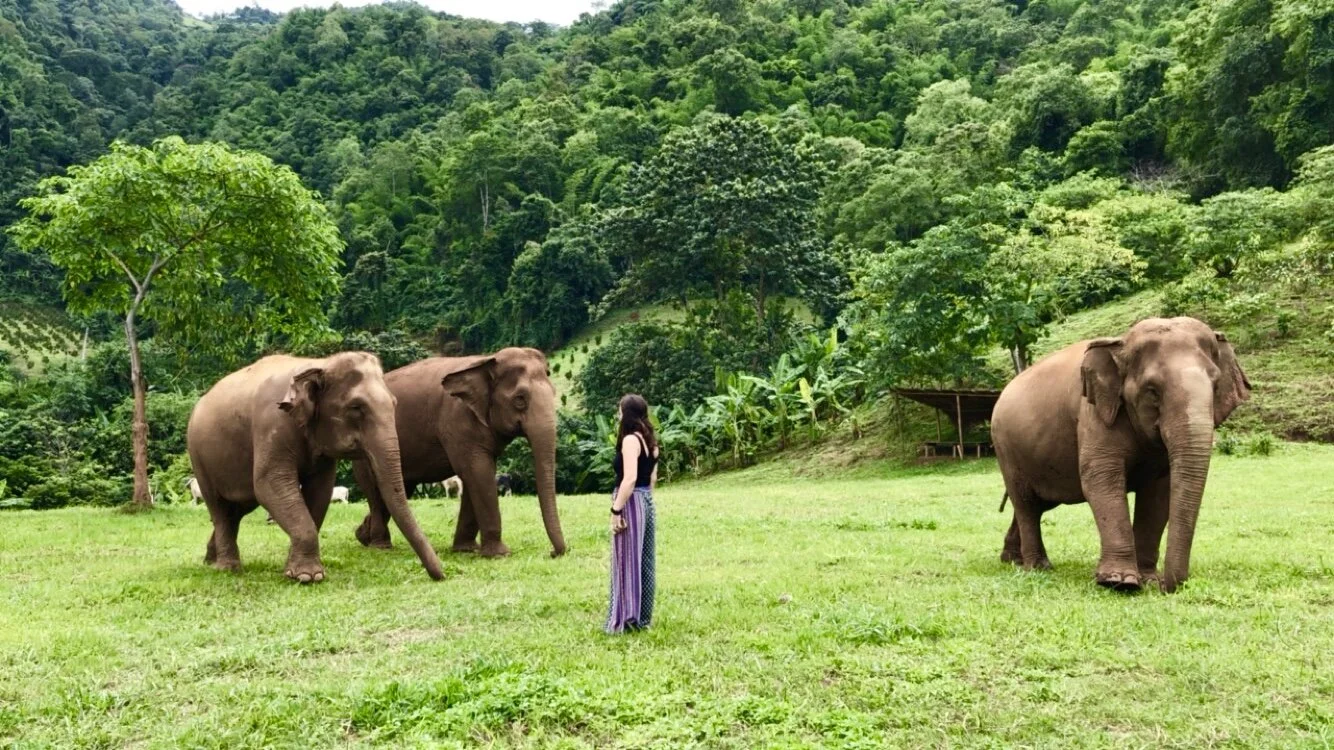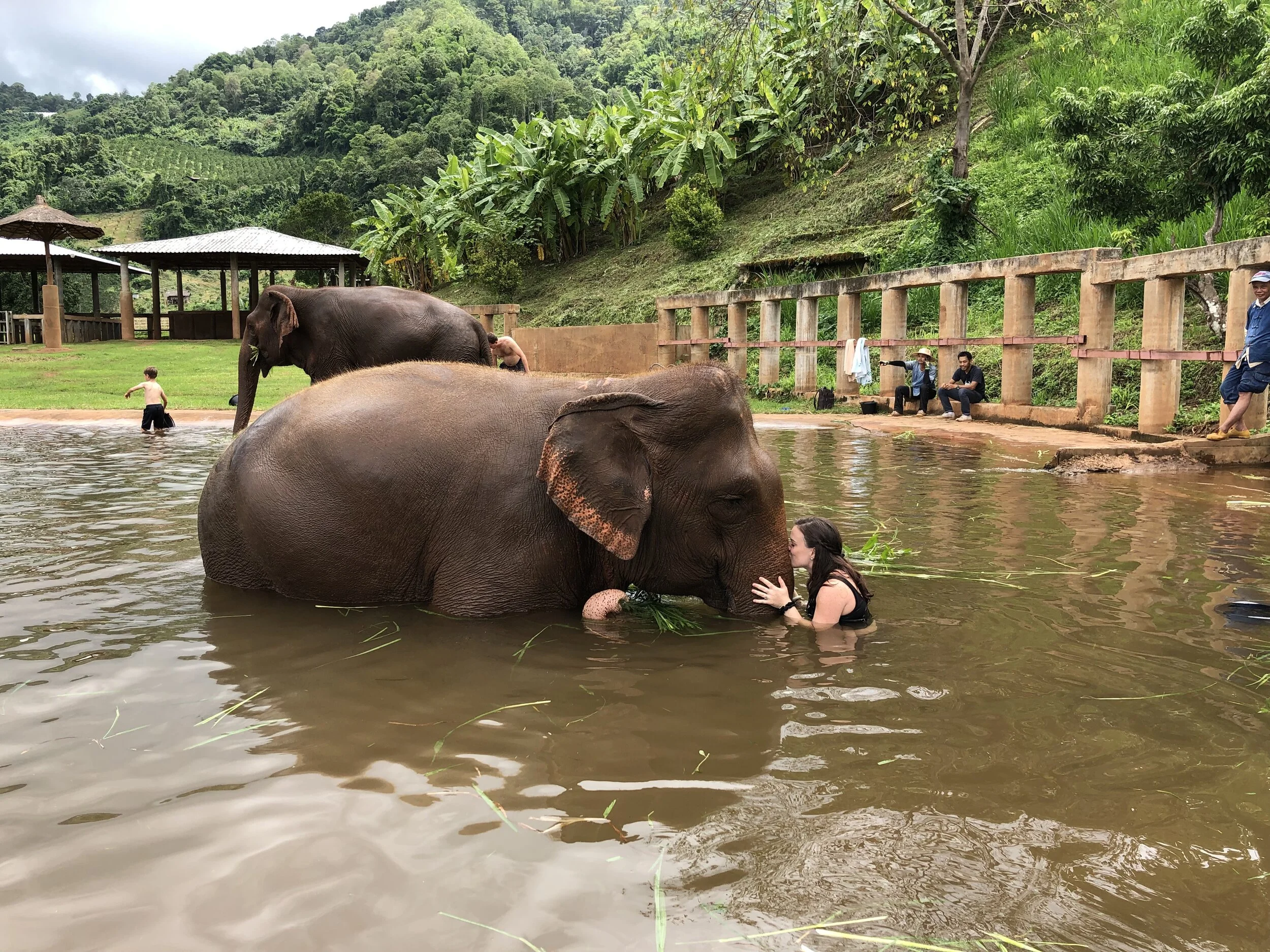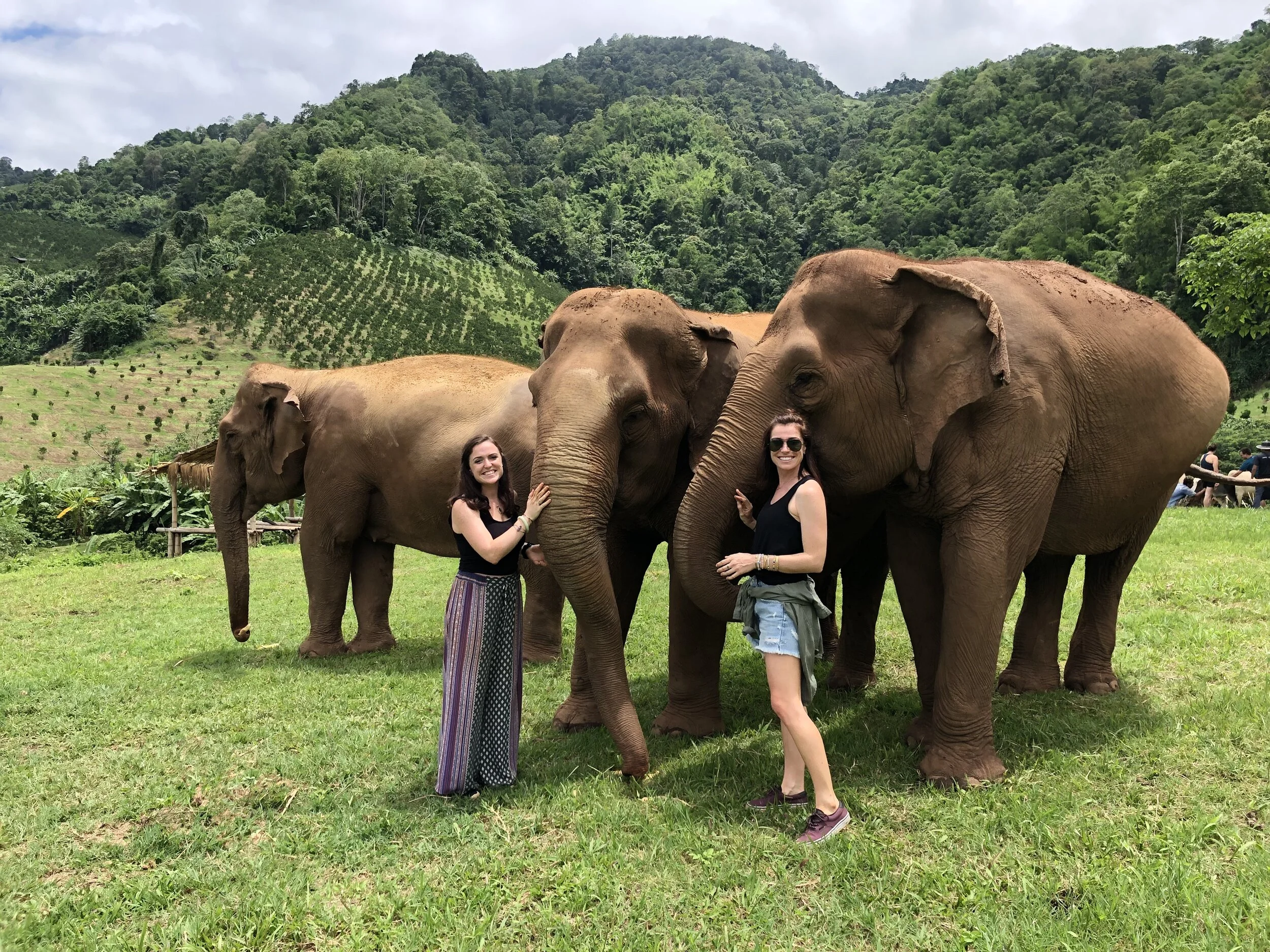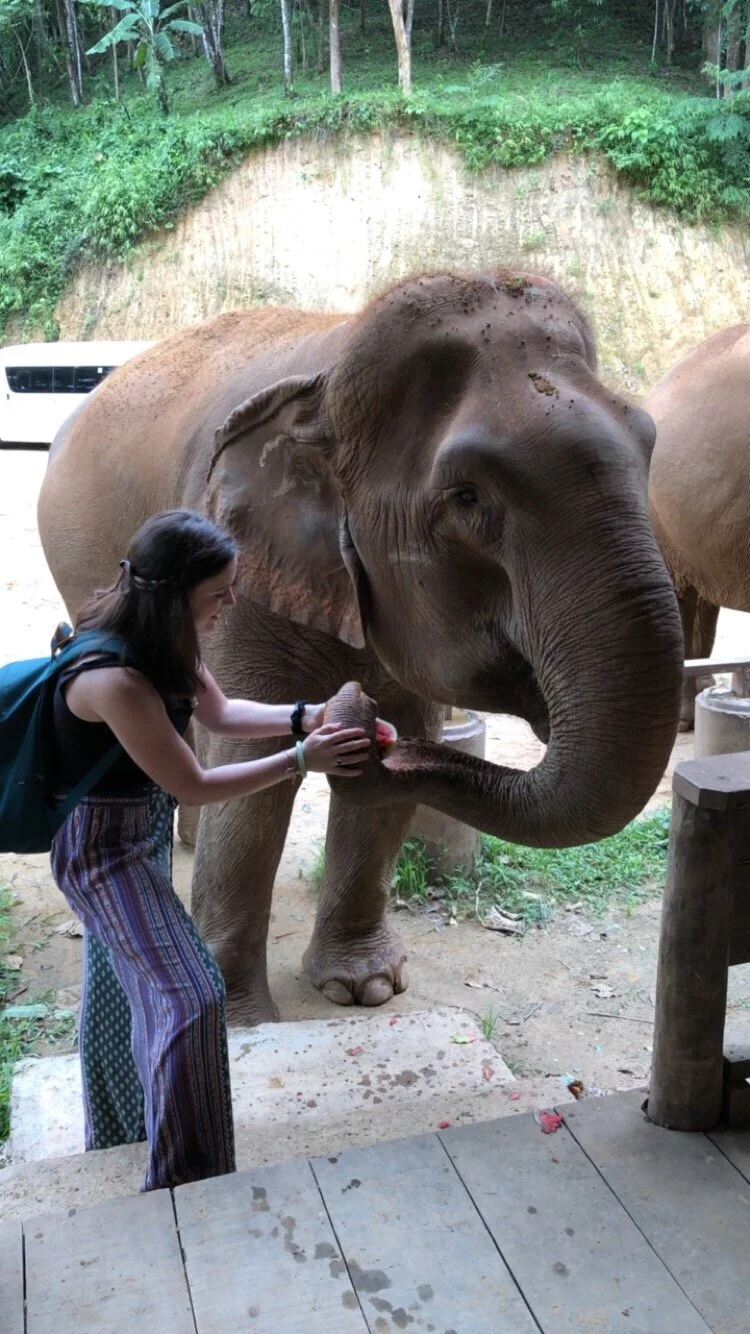What to Know About Elephant "Sanctuaries" in Thailand






















When traveling to new places, especially other countries, it’s important to know the strengths and weaknesses of the places we’re traveling to.
Before traveling to Thailand, I knew I wanted to visit an elephant sanctuary. So, prior to leaving, I read multiple articles — written by NatGeo and various animal rights activists — about chang Thia, ช้างไทย, a subspecies of the Asian elephant, and the official national animal of Thailand.
But what I ended up reading was article after article about the exploitation of Asian elephants for tourist entertainment in Thailand.
Here’s what I knew before my visit:
Thailand has no legal regulations for elephant “sanctuaries;” therefore, an establishment can call itself a “sanctuary” without actually being a sanctuary.
Elephants must be “tamed” before humans can ride them (spoiler alert: wild animals are wild animals; therefore, they can never be fully trained nor tamed). This “taming,” called Phajaan, begins when they’re young. This process includes: stripping a young, nursing elephant from his or her protective mother, placing them in a tiny enclosure just large enough to fit their bodies, withholding food and drink to weaken the baby elephant, severely striking the animal with whips or bamboo sticks, jabbing and poking with metal-tipped poles, burning with hot iron or metal, binding the elephant with ropes and nooses, and then, eventually, training the wounded, starving, and depressed elephant to obey specific commands (using a sharp hook known as a goad), so they can be used for rides, entertainment, and/or manual labor.
If you are riding on top of an elephant, you can guarantee that the elephant you are riding on has been subjected to this abuse — this applies to parks, sanctuaries, festivals, carnivals, tourist attractions, or any event both inside and outside of Thailand. If you visit a location where rides are being offered, if tricks are being performed, if you see chains or cages, if the ground the elephant stands on is made of concrete, if there is no access to a large body of water for the elephants to cool off in, if they are kept alone and not with other elephants, if they are being fed fruit and sugary sweets in excess, if pictures with baby elephants are being taken, if there are saddles on their backs or ropes around their necks, it is NOT healthy for the elephant.
It is a tourist trap. And you have fallen in it.
Here’s what I know now after my visit:
While in Thailand, my sister and I visited Elephant Nature Park in northern Thailand, and opted to do a “Saddle Off” program, which is more of a “volunteer” based visit. (I put “volunteer” in parenthesis because it’s not really volunteering if you’re paying to do so.)
In retrospect, I would not visit this Park (or any park) again.
I am embarrassed to admit that I, too, fell into a trap.
Upon returning home, and after further research, I now know that the only proper way to see an elephant is in the wild or at a reserve, from a safe distance, to ensure that the elephant is living the most natural lifestyle possible (aka: the lifestyle it deserves to live). No matter the name or reputation, parks and sanctuaries are still profiting off the use of elephants. And more money equates to more elephants equates to more money, and on the cycle goes. Human interaction, no matter the environment, is unnatural and should be avoided at all cost.
I cannot say I regret my experience, because I did not have this knowledge and information at the time…
But, as the great Maya Angelou says, “…when you know better, do better.”
And I know I will do better the next time I visit Thailand.
**If you’d like to read more about elephants and their abuse, this website is a great place to start.**
**This article was also extremely eye-opening.**




